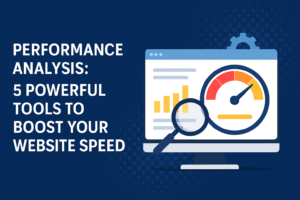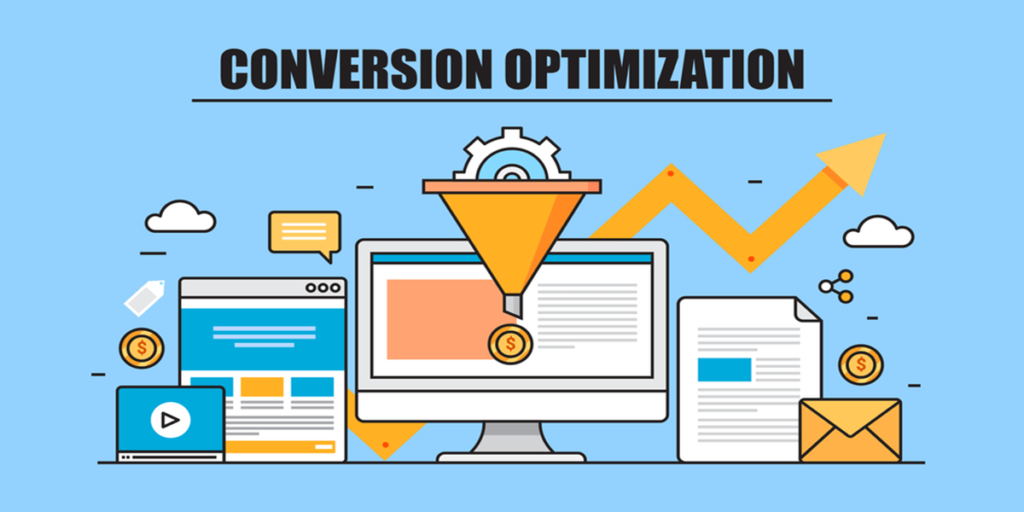Introduction
Website performance isn’t just a luxury—it’s essential. A sluggish site can frustrate visitors, hurt your rankings, and drive away potential customers. That’s why performance analysis should be at the heart of every optimization effort.
Using reliable website speed tools, you can run quick diagnostics and uncover what’s slowing your pages down. These tools simplify performance analysis and offer actionable insights to speed things up and keep users engaged.
In this article, we’ll walk you through five of the most effective tools to test your website’s loading speed and elevate your site’s performance.
Google PageSpeed Insights
Google’s PageSpeed Insights is one of the most trusted website speed tools available—and it’s completely free. It evaluates your site’s performance on both mobile and desktop, giving you scores out of 100 along with suggestions for improvement.
Key Features:
- Performance scores for mobile and desktop
- Field data (real user experience) and lab data
- Optimization suggestions like image compression, caching, and code minification
- Core Web Vitals analysis
Why It’s Great: It’s backed by Google, offers actionable insights, and aligns with SEO and performance analysis metrics.
Use It Here: https://pagespeed.web.dev/
GTmetrix
GTmetrix is another top-tier tool for website speed testing. It combines performance scores from Google Lighthouse with additional performance analysis to give you a comprehensive overview.
Key Features:
- Detailed waterfall chart of loading times
- Page structure analysis
- Recommendations sorted by priority
- Historical performance tracking (with a free account)
Why It’s Great: GTmetrix offers a clear visualization of what’s slowing your site down and allows for testing from different locations and browsers.
Use It Here: https://gtmetrix.com/
Pingdom Website Speed Test
Pingdom is a user-friendly tool that provides a simplified look at your website’s speed and performance. It’s ideal for beginners who want a fast, easy-to-understand report with essential performance analysis.
Key Features:
- Performance grade and load time
- Requests breakdown by content type (images, scripts, CSS)
- File size analysis
- Waterfall visualization
Why It’s Great: The intuitive interface makes it easy to spot issues and track performance over time.
Use It Here: https://tools.pingdom.com/
WebPageTest
If you’re looking for a professional-grade analysis, WebPageTest offers deep insights that go beyond basic load times. It’s used by performance engineers for its advanced testing features and in-depth performance analysis.
Key Features:
- Multi-step transactions and scripting support
- Test from different devices and locations
- Core Web Vitals data
- Visual comparison between test runs
Why It’s Great: It’s extremely detailed, allowing power users to pinpoint issues under various conditions.
Use It Here: https://www.webpagetest.org/
Lighthouse (via Chrome DevTools)
Lighthouse is built right into Google Chrome’s Developer Tools, offering a quick and powerful way to run audits on any web page in real-time.
Key Features:
- Audit categories: Performance, Accessibility, SEO, Best Practices
- Core Web Vitals insights
- Opportunity and diagnostic suggestions
- Simulated mobile device testing
Why It’s Great: You can run it directly in your browser without installing anything and get detailed technical recommendations based on solid performance analysis.
How to Access: Open Chrome DevTools → Click on the “Lighthouse” tab → Run audit.
How to Use Website Speed Tools Effectively
To make the most of these website speed tools, follow these best practices:
- Test multiple times: Results can vary depending on server load and network conditions.
- Analyze mobile and desktop versions separately.
- Always implement the top-priority fixes first (e.g., image compression, lazy loading).
- Combine tool insights for a full performance analysis—each platform may catch different performance bottlenecks.
Bonus Tip: Run tests after making performance changes (like installing a caching plugin or updating your theme) to see measurable improvements.
Why Website Speed Matters More Than Ever
Did you know that 53% of users abandon a site if it takes more than 3 seconds to load? A slow site not only turns away visitors but also impacts your search engine rankings.
Here’s what good performance leads to:
- Better user experience
- Lower bounce rates
- Higher conversion rates
- Improved SEO rankings
That’s why performance analysis using website speed tools is critical for success in 2025 and beyond.
Final Thoughts
Speed is a cornerstone of modern web design—and the good news is that it’s never been easier to analyze and improve. With tools like PageSpeed Insights, GTmetrix, and WebPageTest at your fingertips, you can proactively optimize your website for performance and deliver the best experience to your visitors.
Start by testing your site with at least two of the tools mentioned above, review the recommendations, and implement improvements. You’ll be amazed at the difference a faster site can make for your audience and your bottom line.



